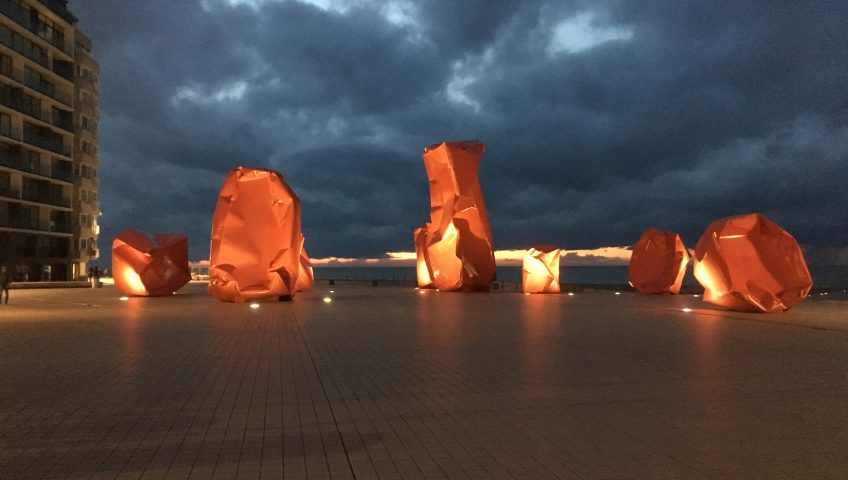Ostend thoughts
I was blown away by the official publicity release from Ostend City that demonstrated such irreverence to Trump’s populism.
I saw huge synergies between the artists inhabiting abandoned buildings on the waterfront of Ostend with our own situation in Govan where artists inhabited an old school at Kinning Park in the 1980’s. I felt the same sense of hopelessness then that the struggle was doomed to fail against the march of gentrification that we witnessed in Ostend and yet that project in 2019 has become an exemplar of community ownership. It is buzzing with artists and community activities. To what do I attribute the success? Artists and activists working together, enrolling experts to support them and forming a community development trust business model to take it forward.
We saw and heard from Siegfried the worry about artists being used as pawns to help prettify abandoned land and raise land values for the benefit of developers. This phenomenon is known as “art washing” and we wondered if artists need to be more responsible about allowing their work to be used like this. We acknowledged that artists have to eat however and the responsibility needs to be shared. Again, I wonder if the partnerships, business models and structures we put in place to take things forward are key to resisting art-wash, gentrification and the use/abuse of participatory interventionist artists in the process.
– Liz Gardiner (Scotland)
Céad míle fáilte
Céad mile fáilte romhaibh (pronounced: kay-ahd mee-leh foil-chyeh row-iv) is an old Irish saying meaning one hundred thousand welcomes before you. This is the kind of warm reception we experienced during our first international meeting in November 2018 hosted by our partners at the Culture Department of the Municipality of Oostende in Belgium. Officially kicking off our Memory of Water project, artists and partners met for three days to discuss the development of activities over the next two years. For the artists, it was also the first opportunity to meet each other in person and to get to know each other’s practice.
From the first day, there was lively discussion and sharing of ideas, with all participants contributing their motivations and perspectives. We discussed the responsibilities and expectations for the project as well as planned results and evaluation methods. The meeting included site visits to cultural events and places where we encountered different examples of best practice in community engagement. Through this blog, we look forward to sharing with you our experiences and learning – but first, thank you for taking this journey with us and céad mile fáilte romhaibh!
– Mary Conlon (Ireland)

